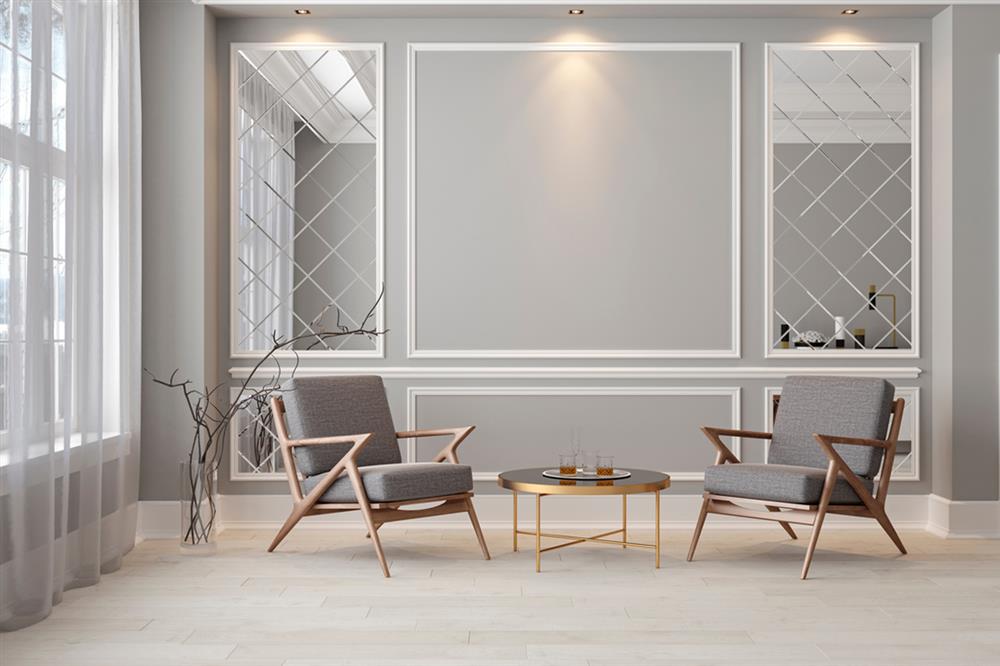Mirrors are often overlooked when it comes to living room decoration, but they can be powerful elements that enhance the beauty and functionality of your space. As someone who has renovated my own living room multiple times, I’ve learned firsthand how the right mirror can not only beautify a space but also create an illusion of depth and light. In this guide, we’ll explore everything you need to know about wall decor mirrors, from styles and sizes to tips on placement and maintenance.
Why Use Mirrors in Your Living Room?
Mirrors serve many purposes in a living room, making them a versatile decor choice. Here are some reasons why you should consider adding mirrors to your wall decor:
- Enhances Natural Light: Mirrors can reflect light from windows, making your space appear brighter and more inviting.
- Creates Illusions of Space: Large mirrors can make a small room feel larger by creating depth.
- Focus and Style: A well-placed mirror can serve as a focal point in your living room decor.
- Complementary Decor: Mirrors come in various styles to match your aesthetic, whether modern, rustic, or eclectic.
The Different Styles of Living Room Wall Decor Mirrors

1. Round Mirrors
Round mirrors can soften the hard lines of your living room furniture and decor. They add an organic touch, creating a focal point that draws the eye.
2. Rectangular Mirrors
Rectangular mirrors are versatile and can fit into various spaces, from over the sofa to above a console table. They come in various sizes and can be framed or frameless.

3. Ornate Mirrors
If you’re looking for a statement piece, ornate mirrors with intricate frames can add a touch of elegance to your living room.
4. Vintage Mirrors
Vintage mirrors bring character and unique charm to your living room. They are perfect for an eclectic or bohemian decor style.

5. Modern & Minimalist Mirrors
For a sleek and contemporary look, opt for modern mirrors with clean lines and simple frames. These mirrors often serve as functional artwork.
How to Choose the Right Mirror for Your Living Room

Determine the Purpose of the Mirror
First, consider why you want to add a mirror. Is it solely decorative, or do you want it to serve a functional purpose, like reflecting light or making your room appear larger?
Consider the Size
Choose a mirror that complements the scale of your space. A small mirror may get lost on a large wall, while an oversized mirror can overwhelm a petite room.

Frame Style and Material
Mirrors come in various frames made from materials like wood, metal, or plastic. Select a style that harmonizes with your existing decor.
Placement Matters
Think about where you want to hang your mirror. The right placement can enhance the overall look of your room and maximize its functionality.

Tips for Mirror Placement in Your Living Room
- Opposite a Window: Place the mirror directly across from a window to reflect natural light.
- Above a Sofa: A mirror above the sofa can create a stunning visual effect.
- In Entryways: A mirror near the entrance provides a practical spot for last-minute checks before leaving.

Comparison Table: Popular Mirror Types
| Mirror Type | Pros | Cons |
|---|---|---|
| Round | Softens lines, adds elegance | May not fit all decor styles |
| Rectangular | Versatile, classic look | Can be considered plain |
| Ornate | Unique, statement-making | Can overwhelm small spaces |
| Vintage | Character, eclectic charm | May be hard to find |
| Modern | Sleek, minimalist | May lack warmth |
Maintaining Your Living Room Mirrors
To keep your mirrors looking their best, it’s essential to maintain them properly. Here are some tips:
- Regular Cleaning: Use a glass cleaner and a microfiber cloth to avoid streaks and maintain shine.
- Avoid Harsh Chemicals: Stay away from abrasive cleaners that can scratch the mirror’s surface.
- Check for Damage: Regularly inspect mirrors for any cracks or damages and have them repaired to avoid further issues.
Pros and Cons of Using Mirrors in Living Room Decor
Pros
- Improves light and ambience
- Creates the illusion of space
- Enhances existing decor
- Variety of styles available
Cons
- Can be expensive depending on style
- High-maintenance if scratched or damaged
- Reflective surface can cause glare
FAQs About Living Room Wall Decor Mirrors
Q1: How do I measure the space for a wall mirror?
A1: Measure the width and height of the area where you want to place the mirror. As a general rule, the mirror should take up about two-thirds of the width of the furniture beneath it.
Q2: Can mirrors be used in small living rooms?
A2: Absolutely! In fact, mirrors are perfect for small spaces as they can create the illusion of depth and reflect light, making the room feel larger.
Q3: What is the best height to hang a mirror?
A3: The ideal height is generally at eye level, which is about 57 to 65 inches from the floor, but it can vary based on specific contexts and furniture height.
Q4: Are frameless mirrors a good choice?
A4: Yes, frameless mirrors offer a clean, modern look and can easily blend into various decor styles, making them a versatile option.
Q5: How do I choose a mirror style that matches my decor?
A5: Consider the existing elements in your room, including colors, materials, and styles. Look for mirrors that complement or contrast these elements without clashing.
In conclusion, living room wall decor mirrors can be transformative elements in your home. They can enhance light, create space, and add a touch of elegance to your living room. By considering the style, size, and placement of your mirror, you can find the perfect piece that complements your decor and meets your needs. Whether you’re going for a modern, vintage, or eclectic look, there’s a mirror that can enhance your living room beautifully!